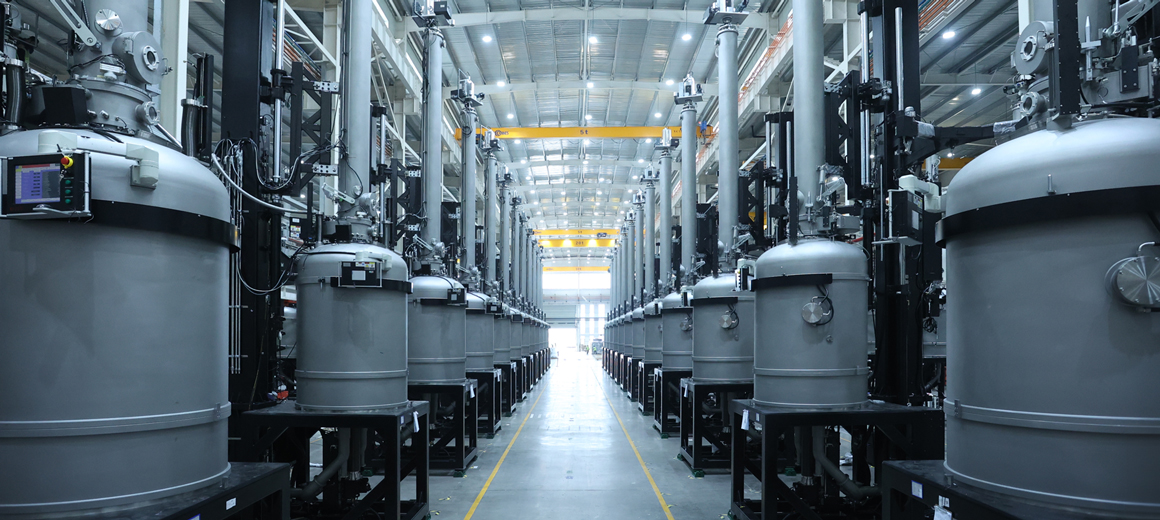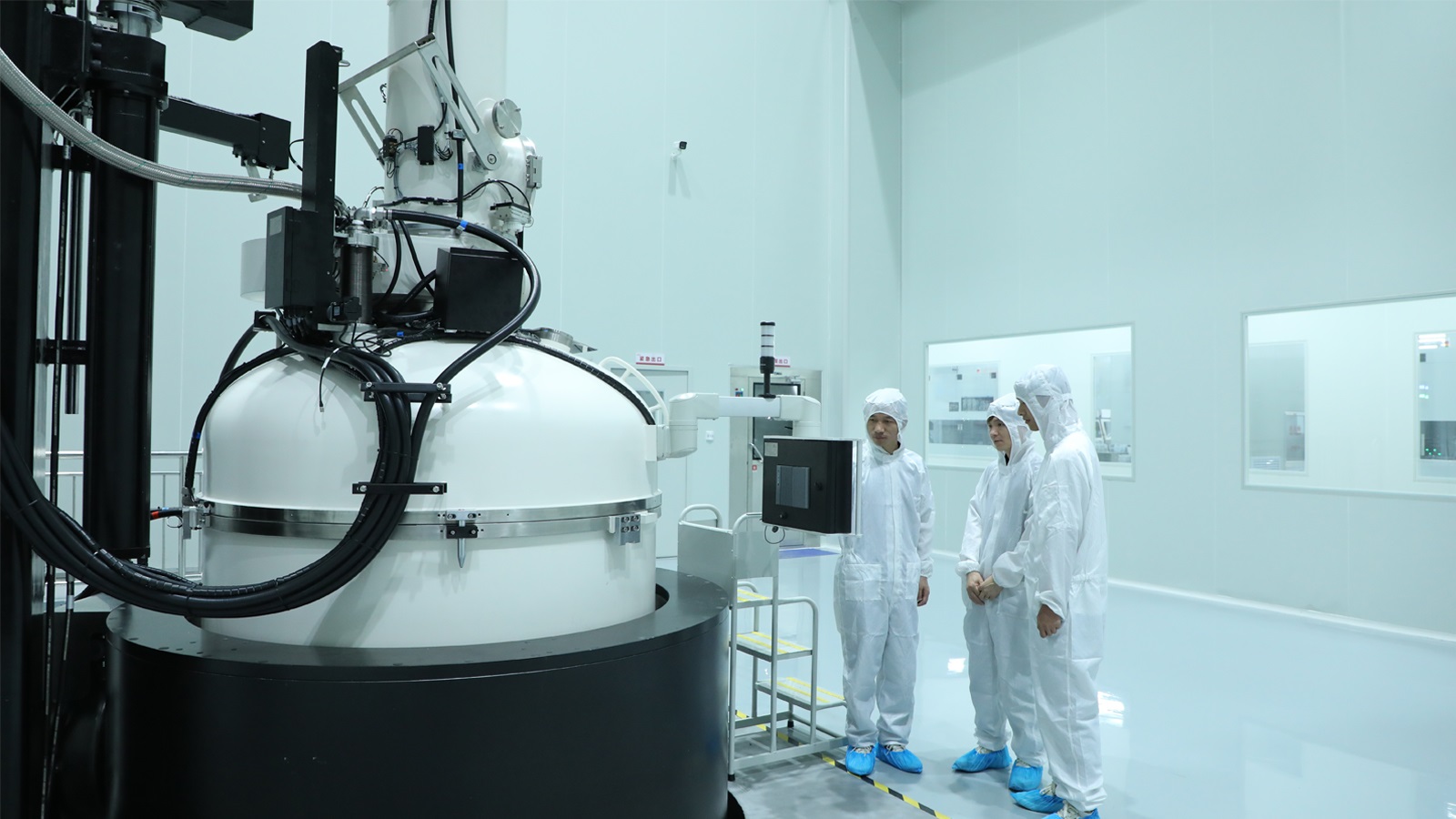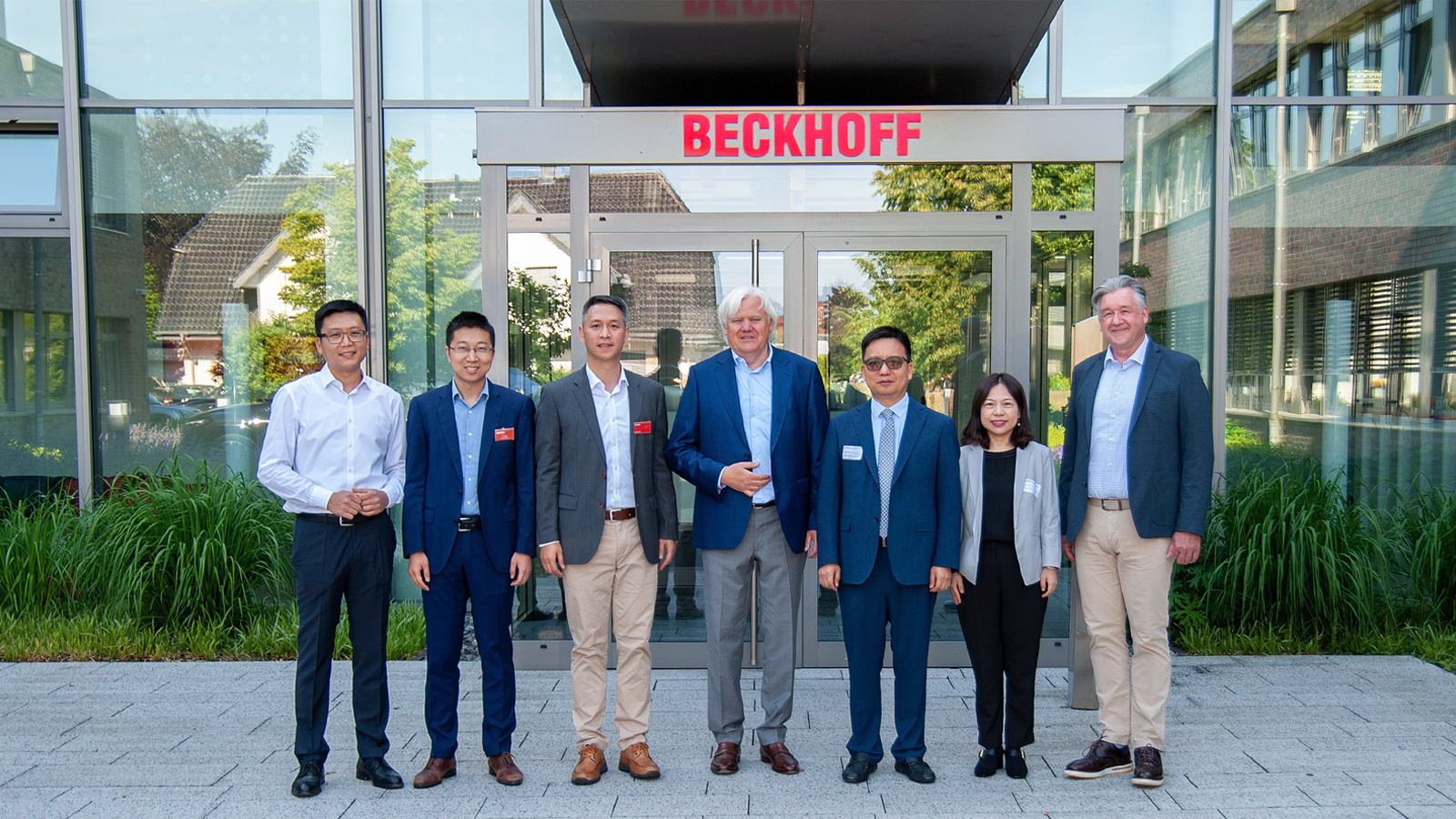

Flexible automation of single-crystal furnaces increases competitiveness
For growing monocrystalline semiconductors, the Chinese company Jingsheng Mechanical & Electrical originally used a separate process and temperature control system. Since the changeover to PC-based control technology from Beckhoff, it not only helps to save costs, but also facilitates the implementation with its scalability. As added value for the customer, the TwinCAT software enables the protection of intellectual property.

Headquartered in the Zhejiang Province, Jingsheng Mechanical & Electrical Co., Ltd. (JSG) is a globally operating and leading supplier of high-end equipment for the semiconductor and photovoltaic industries. With many years of development experience, JSG is an established supplier of crystal-growth technology for photovoltaic equipment. For automating its single-crystal furnaces, JSG previously used a conventional PLC and a temperature control system. The temperature control, however, offered only limited functionality and, in combination with the PLC, had become too unflexible. Therefore, JSG adopted a Beckhoff control platform consisting of an Embedded PC, the TwinCAT automation software and various EtherCAT Terminals to easily and flexibly connect the field devices via the industrial Ethernet system EtherCAT. The integrated control platform replaces two separate devices and according to JSG offers more flexibility by far for adaptation to individual requirements.
Stable process control is key requirement
The growth of monocrystals is possible only under specific conditions. Silicon is melted in the furnace and a monocrystalline seed crystal on a metal rod is dipped into the melt, starting the crystallization process. While the melt has to be kept at a certain temperature, the rod is slowly rotated and pulled upwards in a way that the material can deposit, until the crystal column, known as an ingot, reaches its final diameter. The advantage of a monocrystalline semiconductor, which is cut into wafers and used in solar modules, is its high efficiency due to uniform crystal orientation.
The prerequisite is precise sequential control and stable process control for longer periods of time – between several days and half a month. Temperature control is essential in this, because uneven temperatures can cause polycrystalline material to grow creating structural defects in the crystal lattice. For continuous furnace operation, the control system must be able to process large amounts of data. However, this is no problem for the Embedded PCs from Beckhoff. The industrial-grade DIN rail controllers also cope well with harsh environmental conditions. While JSG started out with a CX1030 Embedded PC, a CX9020 or CX8080 now serves as the central machine controller, depending on project requirements. The company benefits from the scalable performance of the controllers, which are always available with new CPU generations, by being able to continuously optimize its production and reduce costs, which increases competitiveness.

While JSG mainly uses TwinCAT 2 control software, the switch to TwinCAT 3 is easy, should extended functionality be needed. When migrating a control project, it is simply expanded and upgraded with only minor changes to the code itself. In addition, TwinCAT supports a wide range of communication protocols, enabling communication between the main control system and subsystems, such as for heating and generating magnetic fields. Seamless data transmission and exchange creates synergies and improves the overall efficiency of the system. Mr. Wang,Senior Specialist at JSG, says the following about the Beckhoff software platform: "The TwinCAT software is mature and field-proven, and its flexible programming facilitates the processing of all kinds of data. In addition, the PC-based control architecture makes it easier to connect the controller to an MES system in order to exchange data between production and enterprise systems."
Flexible configuration with EtherCAT
For real-time communication via EtherCAT, JSG can choose from the wide range of available EtherCAT Terminals. Mr. Wang explains: "EtherCAT distributed I/O modules bring great convenience to project implementation, with unrestricted topology flexibility and a huge range of diverse configuration options. Thus, we can select them based on the needs and cost requirements of different projects. The EtherCAT products from Beckhoff are easy to use, compatible, and can be used to replace slave products from different manufacturers without affecting overall performance and stability, while also ensuring the consistency of the EtherCAT products. Since EtherCAT eliminates the need for switches or other active devices, the cost of purchasing and maintaining hardware equipment are reduced, as well as simplifying wiring and commissioning of the system."
Code protection through sub-division of tasks
One of the core components in single-crystal furnace control is temperature control, and customers need to keep this part of their intellectual property highly confidential. An advantage of the modular automation software TwinCAT is that users can easily separate the entire control program into sets of subtasks based on their priority, and assign different users to manage them independently. Data exchange between the different subtask programs can be achieved through variable mapping. The single tasks will be called up in the runtime by TwinCAT. The modular design makes software development and maintenance more flexible and efficient. Also, JSG adopts multi-PLC task processing to encapsulate the core process algorithm into a single PLC program. In order to protect the security of the core algorithm program, JSG saves the program as binary code that cannot be decompiled. The deployment is very convenient, as the complete program can be downloaded simply by copying these binary code files to the target controller.
Following the company's latest technological innovations, Mr. Wang says: "JSG has launched its fifth-generation single-crystal furnaces based on an open platform architecture. Their biggest advantage lies in the transition away from a traditional closed control system model towards configuration with software-based control with an open architecture. The platform enables the automatic creation of TwinCAT XAE configurations via high-level language programming, based on the TwinCAT Automation Interface. Using this interface, end customers can turn valuable knowledge regarding their own manufacturing processes into software modules. This greatly increases the capabilities of end users to develop customized processes and protect their innovations in order to improve their competitiveness."